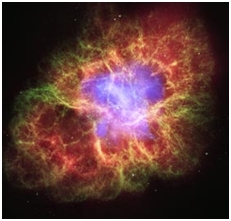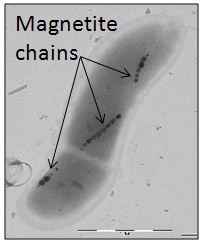Searching for Supernovae in Microfossils

Stars that begin their lives with masses ≈10 times the Solar mass can end their lives as a Type II core collapse supernovae; while those with masses less than 10 Solar masses can end their lives as Type Ia supernova, when a White Dwarf star explodes. These explosions seed the Universe with the elements of life.
In both supernova types large amounts of the neutron-rich isotope 60Fe is produced. This nucleus has a half-life of 2.62 Myr and, within our Cosmos, is produced only in large amounts in such stars. Because its half-life is short compared to the age of our Solar System, no 60Fe should be present on Earth. Any discovery of 60Fe on Earth would indicate a direct interaction of our planet with the ejecta of a past supernova.
60Fe has been recently discovered on Earth and geological dating puts the event 2.8 Myr ago. See the result here: [K. Knie et al., Phys. Rev. Lett. 93, (2004) 171103; doi:10.1103/PhysRevLett.93.171103].
We are beginning a program to search for 60Fe in the fossil record. Our fossil source is an unusual source: pure magnetite crystals that are formed in the cellular volume of Magnetotactic bacteria. Magnetite is composed of Fe3O4 and the bacteria extract the iron from the water and from the sediments in which they live to make these crystals. Magnetite fossils have been found in deep ocean drill core sediments going back as far as 1 billion years before the present. Magnetite fossils from the epoch of the supernova event of ~3 Myr ago should contain 60Fe. And ocean drill cores contain copious quantities of these crystals from which enough material can be obtained to perform accelerator mass spectroscopy (AMS) measurements at the MLL tandem laboratorium, here at TUM.
We have established a collaboration with Ramon Egli, of the the Geophysics faculty at LMU, whose team has the expertise on characterizing ocean drill cores for their microfossil content, and with the group of Dirk Schüller of the biology faculty at LMU, who are experts on culturing these bacteria. Here, at TUM, we have renown expertise in the techniques of AMS and the world’s most sensitive facility for detecting still-live 60Fe nuclei.
Combining the expertise in these three diverse fields of science, we intend to:
- Confirm cultured bacteria do, in fact, uptake 60Fe and incorporate it into their magnetosomes and to determine the uptake efficiency.
- Develop chemical techniques to efficiently extract the iron from the microfossils contained in the ocean drill cores.
- Perform AMS measurements of cultured 60Fe-bearing magnetosomes to determine the uptake efficiency
- Perform AMS measurements of the extracted iron from the ocean drill cores to determine if the 60Fe supernova signature resides in the microfossils.

Detection of 60Fe in the micro-fossils would mark the first time that the signal of a cosmic event resdies in the fossil record of our planet. It could also open up new avenues of research into AMS searches of other rare isotopes that might be contained within bio-minerals.
For more information, please see our publication on this topic: S. Bishop, R. Egli, Icarus 212 (2011), 960-962; doi:10.1016/j.icarus.2011.02.003. (Alternatively, on the Arxiv: arxiv:1010.5109v2)